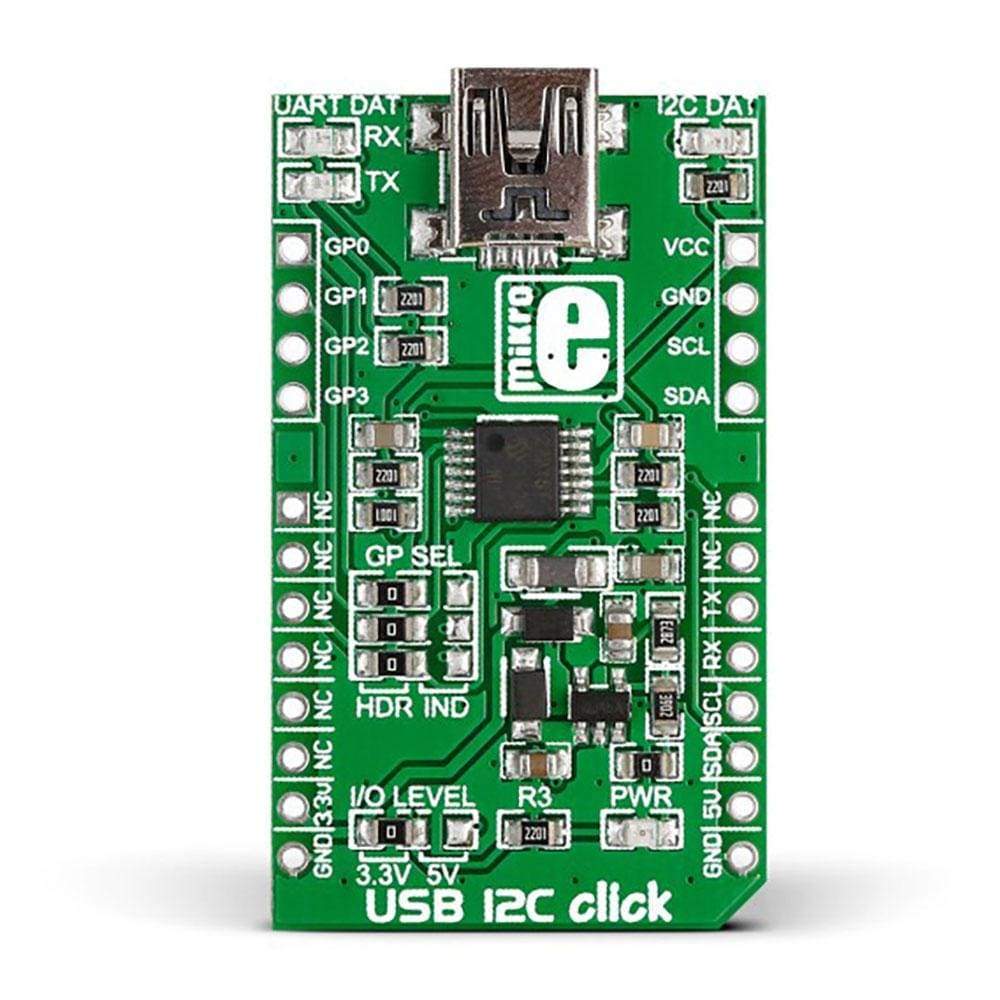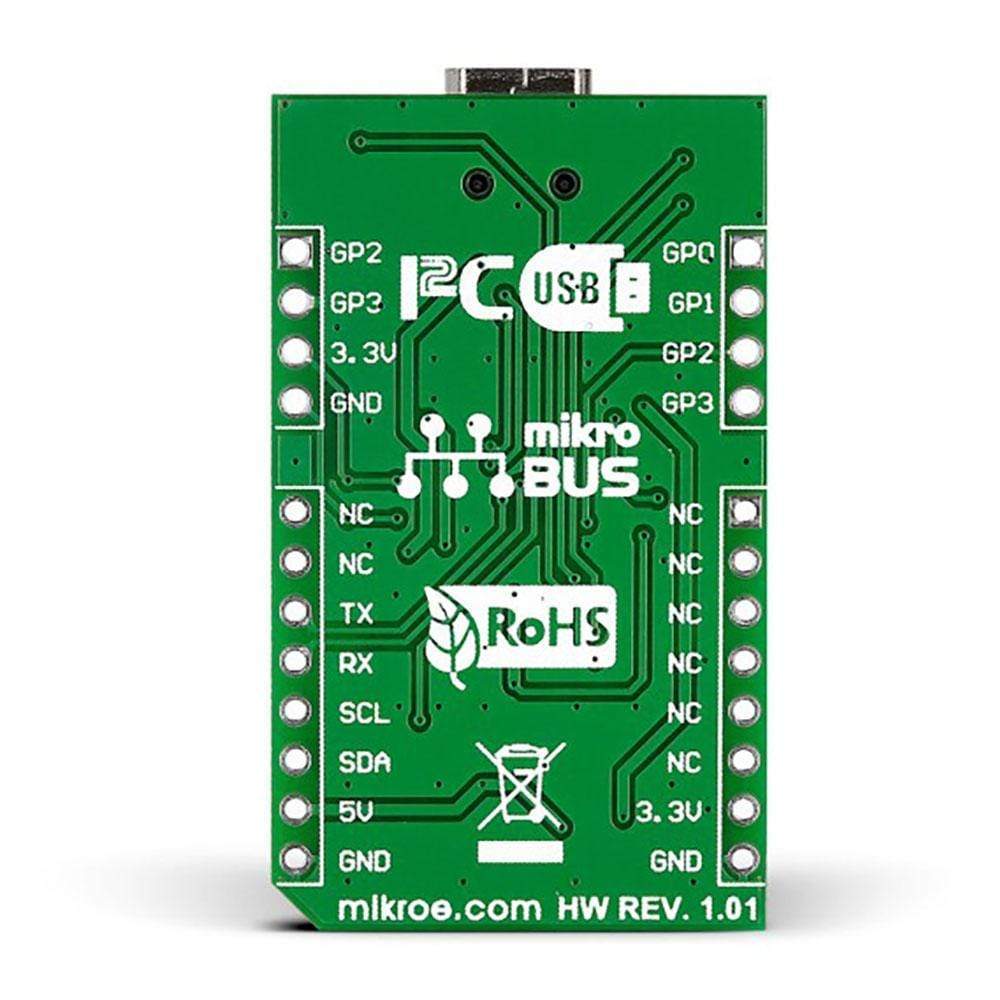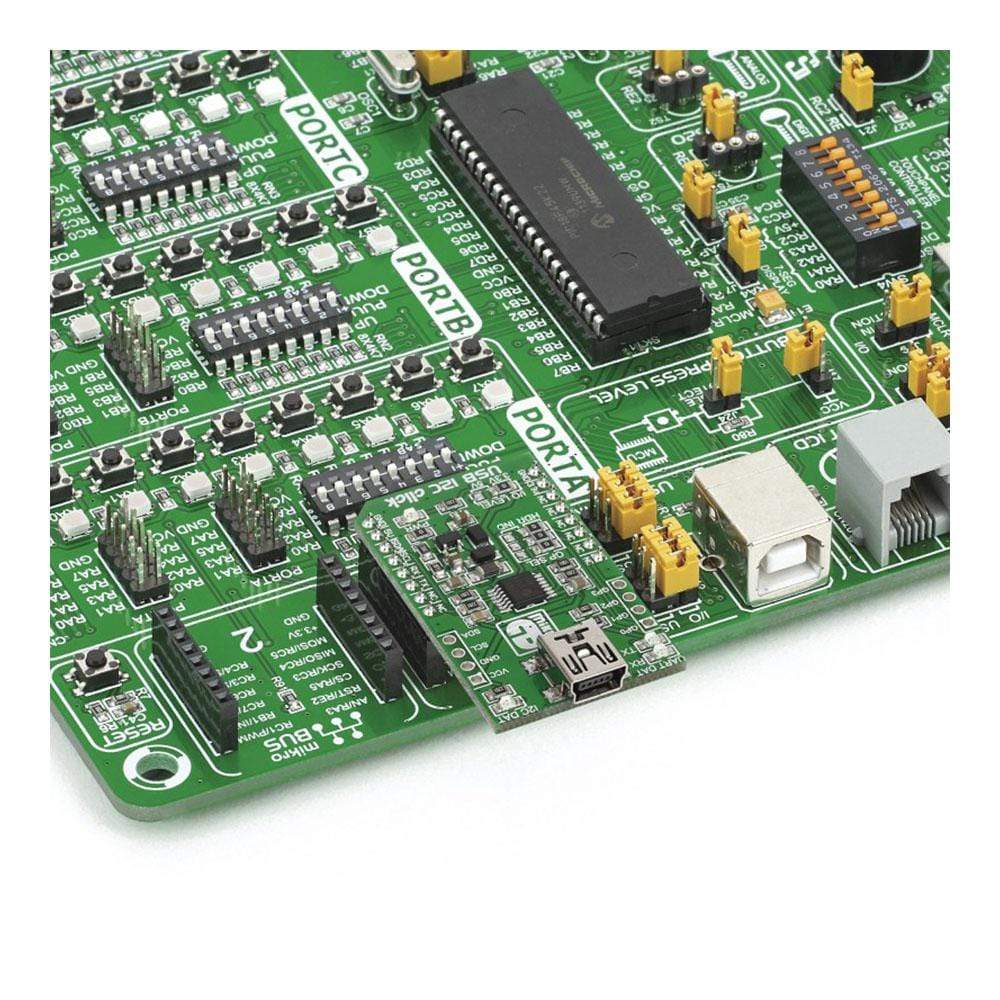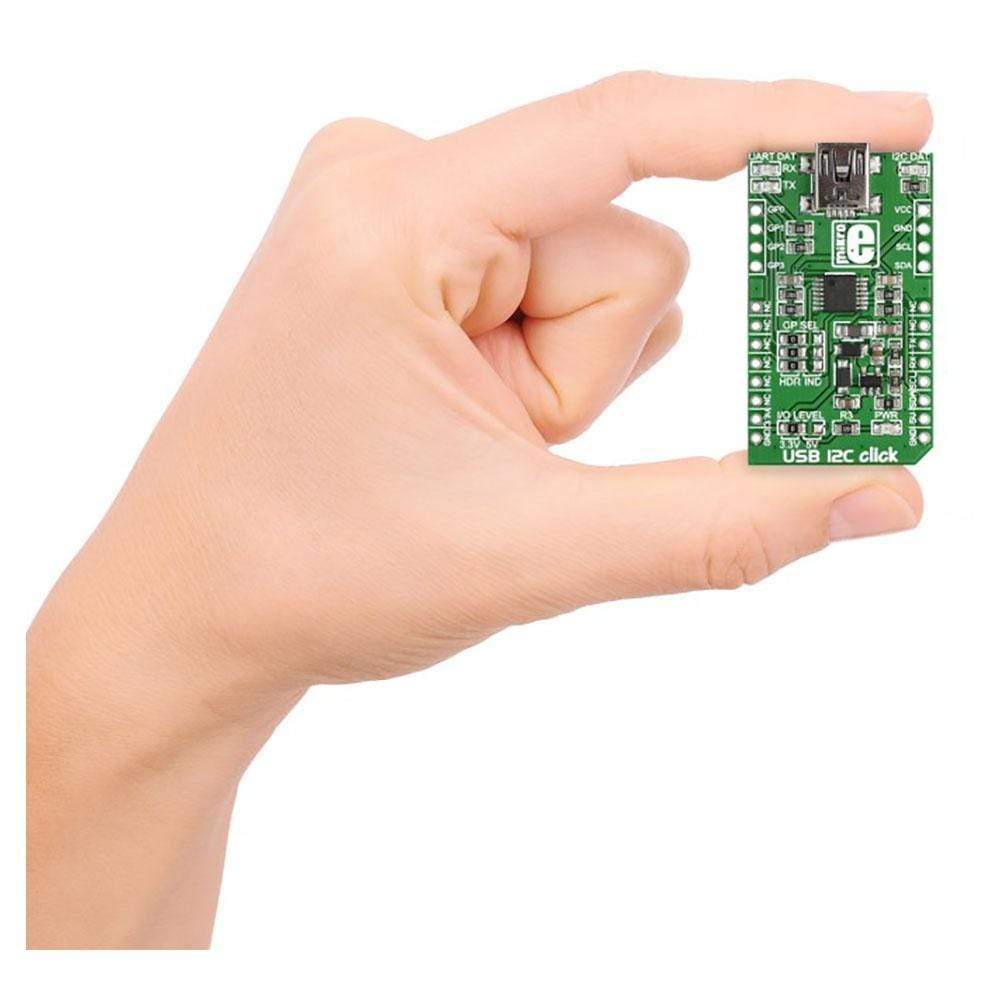



Overview
The MikroE USB I2C Click Board™ is a communication add-on board that acts as a highway intersection with one way in, three ways out for serial data. It incorporates a Microchip.
The USB I2C Click Board™ carries an MCP2221A USB-to-UART/I2C converter. The chip supports full-speed USB (12 Mb/s), I2C with up to 400 kHz clock rates and UART baud rates between 300 and 460800. The board communicates with the target MCU through mikroBUS UART (RX, TX) or I2C (SCL, SDA) interfaces. In addition to mikroBUS, the edges of the board are lined with additional GPIO and I2C pins. It can operate on 3.3V or 5V logic levels.
Downloads
Le MikroE Carte Click USB I2C™ est une carte complémentaire de communication qui agit comme une intersection d'autoroute avec une entrée et trois sorties pour les données série. Elle intègre une puce électronique.
La carte USB I2C Click Board™ La carte est équipée d'un convertisseur USB vers UART/I2C MCP2221A. La puce prend en charge l'USB à pleine vitesse (12 Mb/s), l'I2C avec des fréquences d'horloge allant jusqu'à 400 kHz et des débits en bauds UART compris entre 300 et 460 800. La carte communique avec le microcontrôleur cible via des interfaces mikroBUS UART (RX, TX) ou I2C (SCL, SDA). En plus du mikroBUS, les bords de la carte sont bordés de broches GPIO et I2C supplémentaires. Elle peut fonctionner sur des niveaux logiques de 3,3 V ou 5 V.
| General Information | |
|---|---|
Part Number (SKU) |
MIKROE-1985
|
Manufacturer |
|
| Physical and Mechanical | |
Weight |
0.029 kg
|
| Other | |
Country of Origin |
|
HS Code Customs Tariff code
|
|
EAN |
8606015076942
|
Warranty |
|
Frequently Asked Questions
Have a Question?
Be the first to ask a question about this.




